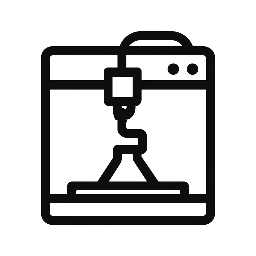The Role of Educators in 3D Printing Advancements
How Teachers, Universities, and Learning Platforms Are Powering the Next Industrial Revolution
🎓 Introduction: Education as the Catalyst for the New Industrial Era
Every industrial revolution begins in the classroom — and the 3D printing revolution is no exception.
Across the globe, universities, technical institutes, and vocational schools are not only teaching students how to use 3D printers; they’re teaching them how to think additively.
Additive manufacturing (AM) represents a fundamental shift in design, engineering, and production — from subtractive to generative, from static to flexible, from mass production to mass customization.
And at the heart of this shift are educators — the architects of imagination and mentors of the makers.
As the world enters the era of Industry 5.0, where humans and machines collaborate creatively, the role of education has evolved from knowledge transfer to innovation enablement.
“Educators aren’t just teaching 3D printing — they’re teaching possibility.”
— 3D Printing Channel Editorial Team
🧠 Why Education Matters in the 3D Printing Ecosystem
1. Bridging the Skills Gap
The demand for additive manufacturing talent is growing exponentially — yet industry surveys consistently show a shortage of skilled professionals who understand both design for additive manufacturing (DfAM) and the underlying principles of materials, simulation, and post-processing.
Educators bridge that gap by creating hands-on, project-based curricula that expose students to every stage of the AM workflow — from concept modeling to digital slicing to mechanical testing.
2. Democratizing Innovation
In many parts of the world, universities and community colleges act as access points for technology that would otherwise be out of reach.
By giving students access to printers, software, and materials, educators are democratizing innovation — allowing ideas to evolve regardless of financial background.
3. Driving Interdisciplinary Learning
3D printing isn’t confined to engineering labs anymore. It’s now integral to architecture, biology, medicine, and even fashion.
Educators are leading this cross-pollination — showing how additive tools can solve problems in bioprinting, sustainability, and design thinking.
🏫 Global Momentum: How Universities Are Leading the Way
From MIT’s Center for Additive and Digital Advanced Production Technologies (ADAPT) to the Technical University of Munich, from Singapore’s AM.NUS Initiative to Penn State’s CIMP-3D, educational institutions worldwide are embracing the additive future.
Their labs act as microcosms of innovation ecosystems, where students, faculty, and industry partners collaborate on materials research, prototyping, and commercialization.
Even high schools and K-12 programs are introducing 3D printing as part of STEM and STEAM education, giving young minds a tangible way to visualize geometry, physics, and design principles.
🤝 Partnerships That Empower Progress
The most impactful educational programs don’t operate in isolation — they thrive through partnerships between academia and industry.
Organizations like the Association of 3D Printing have become vital connectors in this network, aligning educators with manufacturers, software developers, and research initiatives.
How Partnerships Benefit Everyone:
-
Students gain real-world experience through internships, case studies, and mentorships.
-
Educators stay current with evolving technology through corporate training and certification.
-
Companies access a pipeline of trained, creative talent who can think beyond traditional manufacturing constraints.
It’s a mutually beneficial cycle — and it’s reshaping how we define learning, making, and innovation.
💼 3D Printing MBA: Bridging Technology and Business
One of the most exciting examples of education-meets-enterprise is the 3D Printing MBA — an online program designed to merge the technical and entrepreneurial sides of the additive industry.
While engineers learn to design, investors learn to deploy — the 3D Printing MBA focuses on how to build and scale 3D printing businesses through strategy, marketing, and capital formation.
Students learn about:
-
Additive manufacturing economics and business models
-
Market analysis and growth strategies
-
Funding innovation through tokens and venture networks
-
Practical case studies from 3D Printing Ventures and 3D Printing Channel collaborations
This cross-disciplinary approach transforms learners into industry-ready leaders who can navigate both the lab and the boardroom — a critical skill set in an era where innovation is inseparable from entrepreneurship.
“Technical skills start the engine; business skills keep it running.”
— 3D Printing MBA Program Director
🎥 Media and Community Learning: The Role of the 3D Printing Channel & Podcast
Traditional classrooms are only one part of today’s learning ecosystem. Platforms like the 3D Printing Channel and 3D Printing Podcast bring additive education to life for global audiences.
-
3D Printing Channel offers video interviews, event coverage, and tutorials, allowing students and professionals alike to stay current on cutting-edge technologies and global trade show insights.
-
3D Printing Podcast delivers long-form discussions with engineers, entrepreneurs, and researchers, turning complex topics into engaging, digestible storytelling.
For educators, these platforms act as living libraries — rich with expert commentary, product demonstrations, and case studies that complement classroom instruction.


🧬 The Bioprinting Revolution: Where Science Meets Education
The rise of Bioprinting World has brought a new dimension to additive learning — literally, a living one.
Bioprinting, the process of printing tissues, cells, and biological structures, requires interdisciplinary collaboration across biology, materials science, and engineering.
Educational partnerships in this field are crucial. Universities working alongside biotech firms are pioneering biofabrication courses that prepare students to enter the next great frontier: regenerative medicine.
Through Bioprinting World’s media and education initiatives, these efforts gain global visibility — inspiring new generations to pursue careers at the intersection of science, technology, and humanity.
🪙 The Future of Learning: Tokenized Education and the $3DP Ecosystem
Imagine a world where education itself becomes part of the economy of innovation — where students, teachers, and institutions are rewarded for contributing knowledge, creativity, and research.
That’s exactly what 3D Printing Coin ($3DP) envisions.
Through a blockchain-based incentive system, $3DP can reward educators for publishing tutorials, students for completing certifications, and institutions for open-sourcing data or curriculum resources.
This tokenized education model turns learning into a collaborative, transparent, and rewarding ecosystem — connecting academia with entrepreneurship in ways never before possible.
“The next generation of engineers won’t just earn degrees — they’ll earn tokens of innovation.”
— 3D Printing Coin Whitepaper
🚀 3D Printing Ventures: Investing in Education’s Impact
Behind every innovation ecosystem lies a network of visionaries who understand that education is the ultimate investment.
3D Printing Ventures embodies this philosophy by funding projects, startups, and academic initiatives that push the boundaries of additive design and production.
By aligning investors with educators, 3D Printing Ventures creates circulation between ideas, capital, and real-world impact — a cycle that accelerates both discovery and commercialization.
Through scholarships, competitions, and joint research programs, they’re proving that education is not just preparation for the future — it is the future.
🌍 Conclusion: The Classroom Is the Launchpad of the Revolution
From university labs to online platforms, from business accelerators to decentralized token economies — the educators of today are cultivating the innovators of tomorrow.
Through collaboration with platforms like 3D Printing Ventures, 3D Printing Channel, Association of 3D Printing, 3D Printing Podcast, Bioprinting World, and 3D Printing Coin, the ecosystem of additive manufacturing is becoming a living classroom for the world.
The next industrial revolution won’t be built in factories first —
It will be built in classrooms, studios, makerspaces, and virtual networks,
guided by educators who believe that imagination is humanity’s most powerful tool.
“Education doesn’t just prepare students for the future of 3D printing — it prints the future, layer by layer.”
— Bioprinting World Editorial Board


Leave a Reply